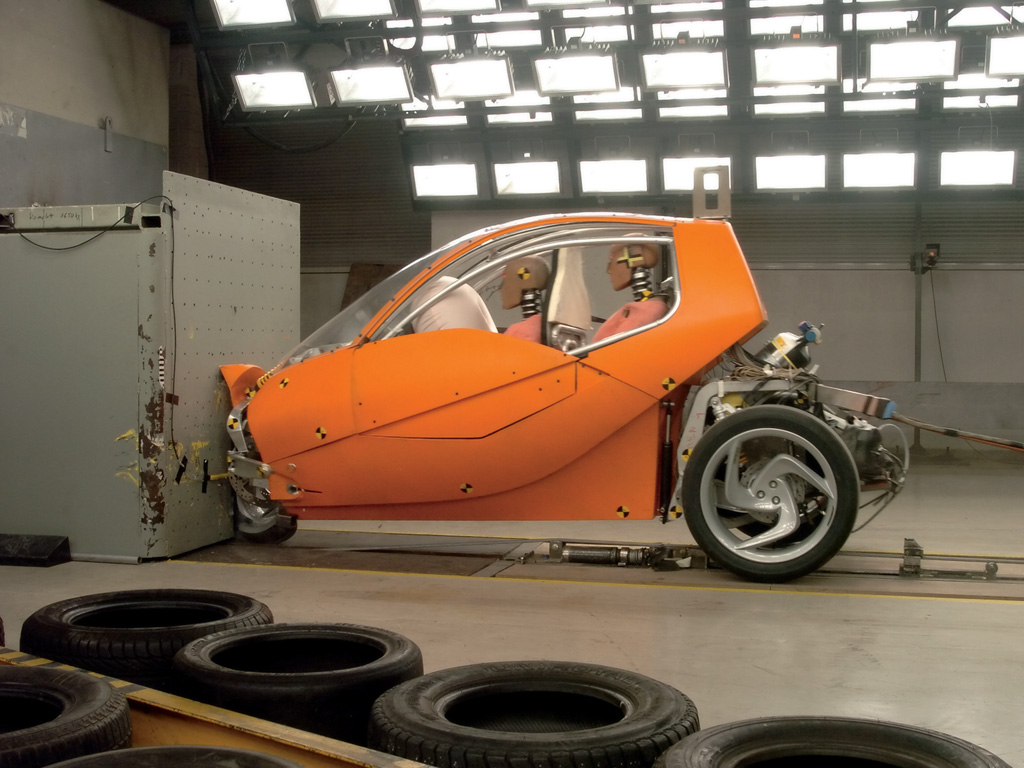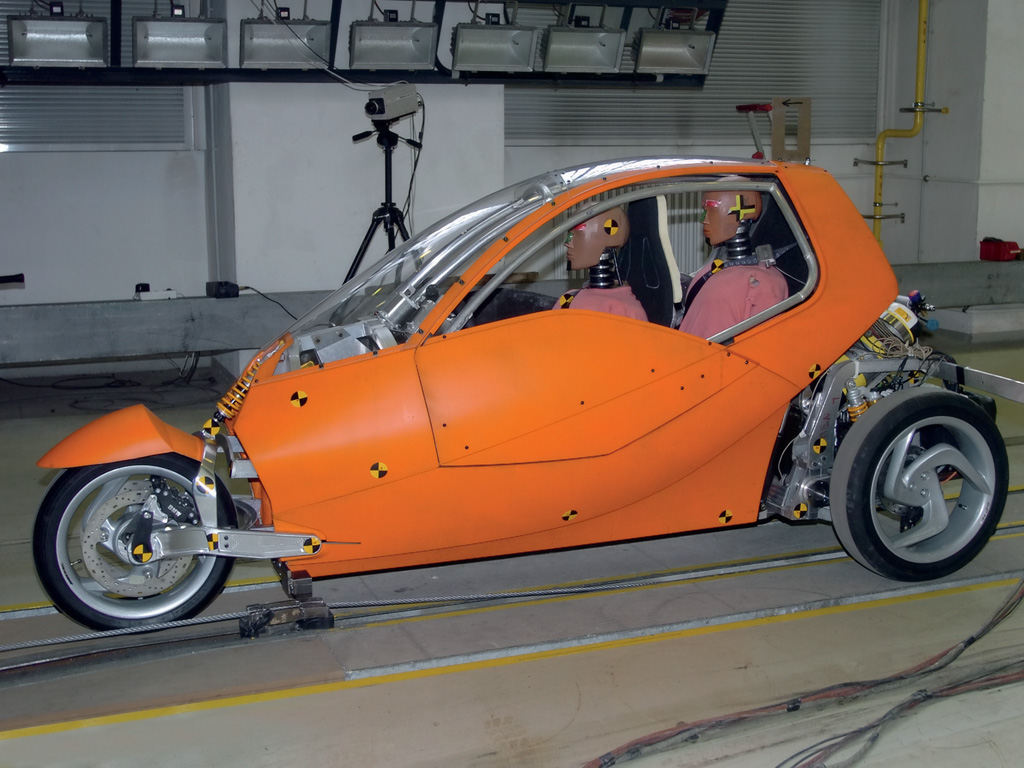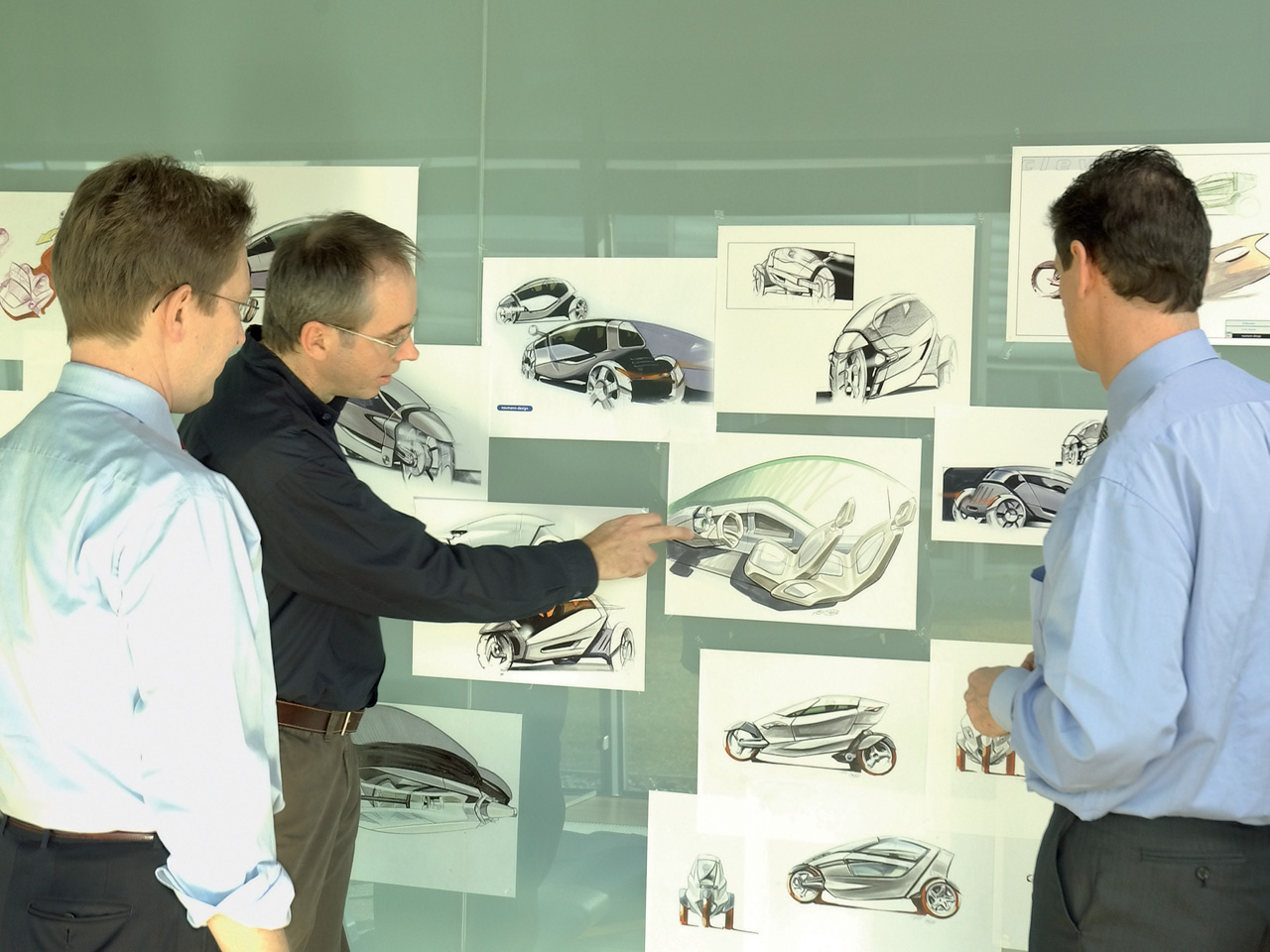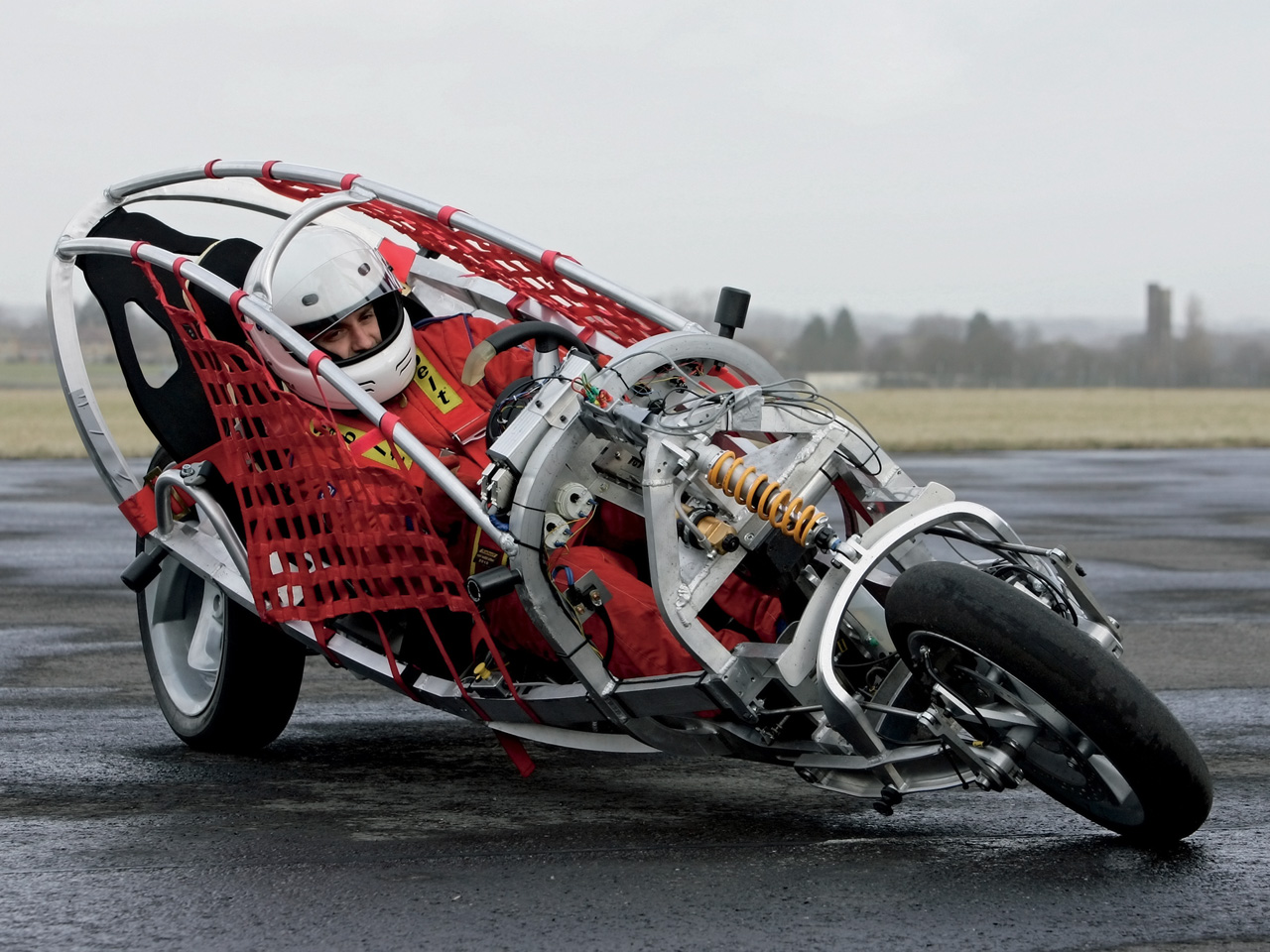2006 C.L.E.V.E.R. Research Vehicle
(from University of
Bath Press Release) The prototype of a revolutionary new
type of vehicle only one metre wide specially designed for cities
has been developed by a team of European scientists. The vehicle
combines the safety of a micro-car and the manoeuvrability of a
motorbike, while being more fuel-efficient and less polluting than
other vehicles.
The CLEVER (Compact Low Emission Vehicle for Urban Transport)
vehicle is a £1.5 million collaborative project which has involved
nine European partners from industry and research, including the
University of Bath
The three-year international project has produced a tilting
three-wheeled vehicle that is fully enclosed and has seats for the
driver and a passenger. Its strengthened frame protects the driver
in a crash and the vehicle has a top speed of approximately 60 mph
(about 100 kph) and an acceleration of 0-40 mph (60 kph) in seven
seconds.
At just over three feet (1 metre) wide, it is 20 inches (0.5 metres)
narrower than a micro-car, and three feet narrower than a medium
sized conventional car. This reduced width means more efficient
parking bays, and the possibility of narrower lanes for such
vehicles.
The vehicle is different from previous attempts to create a small
urban vehicle in that it is fully enclosed in a metal framework, is
stylishly designed and is much safer. Its roof is as high as
conventional cars, and it carries one passenger, who sits behind the
driver.
Yesterday's UK launch of the car, held at the University of Bath,
has resulted in coverage in the national media (see Related Links -
the BBC site has video footage from the 6 O'Clock news bulletin last
night).
German, French, British and Austrian organisations, including BMW,
began work on the project in December 2002 completed it in March
this year. It is funded by the European Union.
Partners include: the Technische Universitaet Berlin in Berlin, the
Institut Francais Du Petrole in Vernaison near Lyon, and the
Institut Fuer Verkehrswesen – Universitaet Fuer Bodenkultur, in
Vienna.
Matt Barker and Ben Drew, research officers at the University of
Bath’s Centre for Power Transmission and Motion Control, developed a
novel tilting chassis concept to keep the vehicle stable in corners.
The vehicle controls the amount of tilt automatically, unlike on a
motorcycle where the rider controls how far to tilt the vehicle.
The hydraulic active tilt system is electronically controlled to
keep the vehicle balanced at all speeds while maintaining car-like
steering throughout. The vehicle has an aluminium frame and plastic
body work.
The work at Bath focused on the design and simulation of the vehicle
chassis and control of the hydraulic tilting system. Cooper-Avon
Tyres Ltd worked with the University of Bath to achieve these goals.
Running on compressed natural gas, the vehicle would not only help
preserve stocks of oil but would emit about a third of the carbon
dioxide than conventional family cars. Because it does not run on
petrol or diesel, it would not be liable for the congestion charge
in London, or any other city where the charge is likely to be
adopted. Its fuel consumption is equivalent to 108 miles per gallon
(or 2.6 litres per 100 kms) with petrol, a third of most cars.
"The CLEVER vehicle is a tremendous leap forward in the development
of vehicles for the 21st century," said Dr Jos Darling, senior
lecturer in Mechanical Engineering at the University of Bath, who is
in charge of its part of the project, with Dr Geraint Owen.
"Making our vehicles smaller is a good solution to the relentless
increase in traffic in our towns and cities. The advent of micro
cars was a first step, but with its manoeuvrability and narrowness,
the CLEVER vehicle is the ultimate in the search for a small vehicle
to get around cities like Bath and London.
"The fact that it has a stylish design, can carry a passenger, is
not open to the weather and is as high as a conventional car, will
mean it will be much more popular with motorists than previous novel
city vehicles.
"It costs less to run, is quieter and is less polluting, and this
will make it popular with environmentalists. Its strengthened safety
frame makes it very safe for the driver in accidents.
"We think the CLEVER vehicle is the way forward in city motoring and
are proud that the University of Bath is at the heart of a European
project to bring it about."
Why did you choose
CNG for the fuel? This was chosen because of the reduced CO2
levels compared to gasoline or diesel based fuels. One of the main
aims of the project is to produce a low emission vehicle.
How much fuel will the Clever car carry and what is the expected
distance it could travel on one fill? There are two removable
cylinders, each with a volume of six litres. Its range is 125 miles
(200km).
Who is supplying the CNG cylinders? The CNG cylinders,
valves, connectors are supplied by WEH GAS Technology GmbH, Germany.
The cylinders are made from carbon fibre, and are derived from
breathing apparatus. The tanks are removable so users can either
exchange empty cylinders for new at any shopping outlet, or fill up
at a regular gas station.
Where did you source the engine? The engine is manufactured
by Rotax and is used in the BMW C1 scooter, but has an increased
capacity of 218cc. The conversion to natural gas was performed by
Institut Francais du Petrole (IFP). The engine was selected because
of its good volumetric efficiency and because it is technologically
advanced for such a small engine.
How are you getting the fuel compressed? CNG is already
available at service stations throughout Europe - the supply
infrastructure is being established - for example Germany has 370
filling stations, Sweden has 31, Italy has 376. In areas where there
is no supply existing exhausted bottles can be exchanged for new
ones at regular filling stations, supermarkets or whoever is willing
to stock them. Exhausted bottles can be collected and charged by the
supplier.



